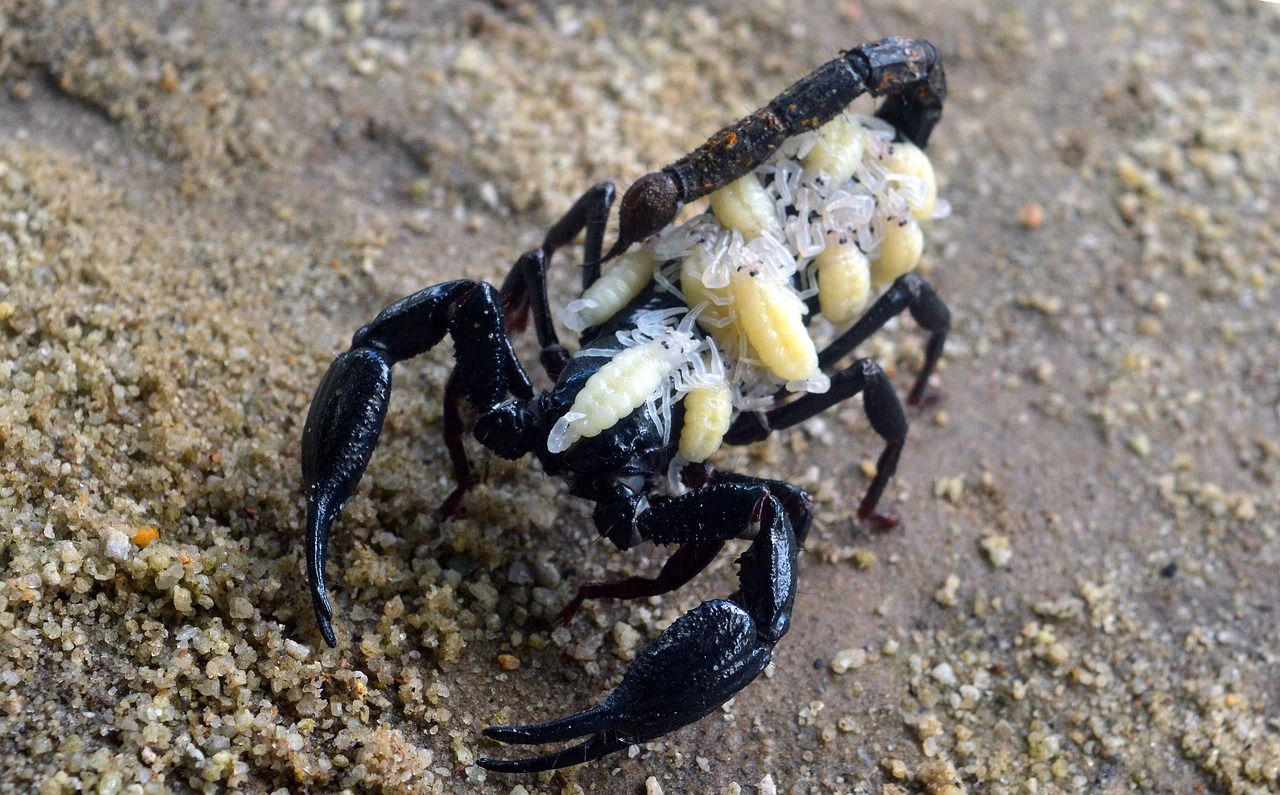Serqet, also known as Serket, Selket, or Selqet, was a prominent scorpion goddess in ancient Egyptian mythology. Generally recognized for her protective qualities, she also exhibited a more menacing aspect. Serqet was believed to have control over venomous creatures such as snakes and scorpions, much like the deities Meretseger and Isis. It was thought that she could shield individuals from poisonous bites while also having the authority to unleash snakes and scorpions against those she deemed deserving of punishment.
Initially worshiped in the Nile Delta, Serqet’s reverence extended across Egypt, with significant cult centers emerging at places like Djeba, now known as Edfu, and Per-Serqet, which corresponds to modern Pselkis or el Dakka. Despite her widespread veneration, no temples specifically honoring her have been unearthed.
In various narratives, she plays a crucial role in safeguarding Isis and her young son Horus, particularly while they sought refuge from Set in the delta’s marshes. Serqet is notably associated with seven scorpions that serve as guardians for the mother and child. Additionally, she is sometimes credited for persuading Ra to halt his sun barque and offer aid when Horus suffers from the venom of a magical snake dispatched by Set. This particular myth contributed to her reputation as a protective figure for both children and expectant mothers, guarding them against harmful creatures.
Serqet’s protective influence extended to Ra during his nocturnal journey through the underworld. She was said to monitor perilous turns in the path and was tasked with restraining the formidable serpent Apep while protecting the sun god’s barque from his aggressive advances. This guardianship was offered to anyone traversing the challenging underworld.
In the tomb of Nefertari, one of Rameses II’s queens, Serqet is depicted welcoming the queen into the afterlife with a proclamation of her identity and high status. She identifies herself as the “mistress of heaven” and assures Nefertari a glorious place among the divine, symbolizing the goddess’s link with the afterlife and her role as a guardian of souls.
In various depictions, Serqet is either considered the mother or daughter of Ra, who embodies the sun’s scorching heat. She earned titles like “Lady of the Beautiful Tent” and “Mistress of the Beautiful House,” associated with the embalming process. Furthermore, she extended her protective powers to Qebehsenuef, one of Horus’s sons, who was responsible for safeguarding the intestines of the deceased.
Serqet was symbolically linked to the western cardinal point, an area representing death and rebirth, while also embodying the energies associated with the breath of life. Her venomous bite could suffocate her adversaries, yet she was also believed to grant life to the justified dead in the afterlife. The Book of the Dead associates her with the teeth of the departed, emphasizing her dual role as a protector and punisher. The extended form of her name suggests meanings related to both providing and paralyzing breath.
The Pyramid Texts refer to her as the mother of Nehebkau, the snake deity who shielded the pharaoh from snakebites. She shared affiliations with Isis and her sister Nephthys due to their collective ties to magic and the underworld. In Edfu, she is also regarded as the wife of Horus and the mother of Horakhty, known as the Horus of the Horizon.
Artistic representations of Serqet often portray her as a woman with a scorpion atop her head, although she also appears in the form of a scorpion with a woman’s head, albeit less frequently. In later depictions, she was sometimes shown wearing Hathor’s headdress— a solar disk flanked by cow horns— reflecting her close association with Isis. In some instances from the Twenty-First Dynasty, she was depicted with a lioness’s head and a protective crocodile at the nape of her neck. Yet, one of her most famous representations is the golden figure discovered in the tomb of Tutankhamun, forming part of the protective ensemble of four goddesses.



